
Cabo Polonio: A Hidden Gem of Uruguay's Rugged Coastline
Discover Cabo Polonio: Uruguay's secluded coastal escape with pristine beaches, abundant wildlife, and a unique off-the-grid experience.
Cabo Polonio is a remote village on the eastern coast of Uruguay. This charming destination is known for its beautiful beaches, diverse wildlife, and tranquil atmosphere. It is a place where you can truly disconnect from the hustle and bustle of everyday life. One of the most unique aspects of Cabo Polonio is its lack of electricity and paved roads. Visitors must arrive by special 4x4 vehicles, which adds to the adventure. Once you arrive, you will be greeted by rustic cabins, quaint shops, and friendly locals. The village is surrounded by sand dunes and the Atlantic Ocean, making it a perfect spot for both relaxation and exploration. Nature lovers will enjoy the abundance of wildlife, including sea lions, whales, and a variety of bird species. The Cabo Polonio Lighthouse offers stunning views of the coastline and is a must-visit landmark. Whether you are looking to unwind on the beach, explore the natural beauty, or immerse yourself in the local culture, Cabo Polonio has something for everyone.
Local tips in Cabo Polonio
- Pack a flashlight as there is no electricity in most places.
- Bring cash, as there are no ATMs in Cabo Polonio.
- Wear comfortable shoes for walking on sand dunes and rocky paths.
- Visit the lighthouse for breathtaking views and photo opportunities.
- Plan your visit during the whale-watching season for an unforgettable experience.
Cabo Polonio: A Hidden Gem of Uruguay's Rugged Coastline
Cabo Polonio is a remote village on the eastern coast of Uruguay. This charming destination is known for its beautiful beaches, diverse wildlife, and tranquil atmosphere. It is a place where you can truly disconnect from the hustle and bustle of everyday life. One of the most unique aspects of Cabo Polonio is its lack of electricity and paved roads. Visitors must arrive by special 4x4 vehicles, which adds to the adventure. Once you arrive, you will be greeted by rustic cabins, quaint shops, and friendly locals. The village is surrounded by sand dunes and the Atlantic Ocean, making it a perfect spot for both relaxation and exploration. Nature lovers will enjoy the abundance of wildlife, including sea lions, whales, and a variety of bird species. The Cabo Polonio Lighthouse offers stunning views of the coastline and is a must-visit landmark. Whether you are looking to unwind on the beach, explore the natural beauty, or immerse yourself in the local culture, Cabo Polonio has something for everyone.
When is the best time to go to Cabo Polonio?
Iconic landmarks you can’t miss
Cabo Polonio National Park
Experience the wild beauty of Cabo Polonio National Park, where stunning landscapes and diverse wildlife await adventurous travelers.
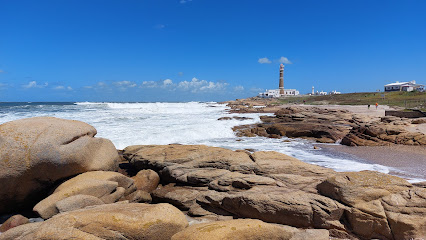
Puerta del Polonio Visitor center
Explore the breathtaking landscapes and biodiversity of Cabo Polonio at the Puerta del Polonio Visitor Center, your gateway to nature's wonders.

Playa Cabo Polonio
Experience the serene beauty of Playa Cabo Polonio, a unique coastal paradise in Uruguay offering pristine beaches, sand dunes, and a laid-back atmosphere.
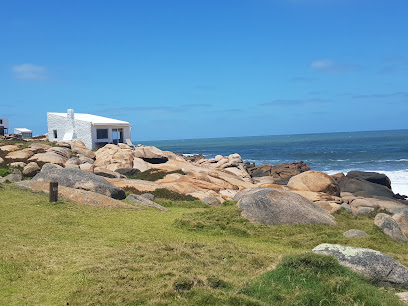
Farol de Cabo Polonio
Explore the breathtaking views and serene atmosphere at Farol de Cabo Polonio, a must-visit lighthouse in Uruguay's stunning coastal landscape.
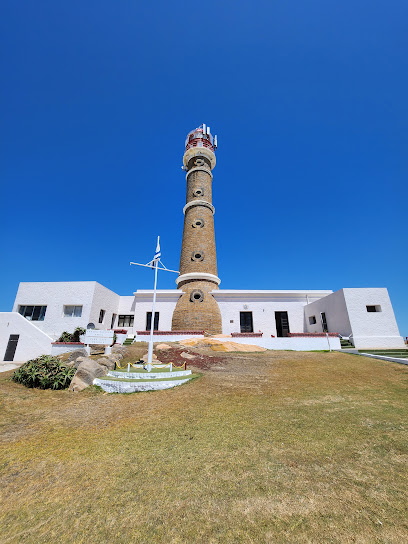
Narakan Cabo Polonio
Experience the natural beauty and rustic charm of Narakan Cabo Polonio, a hidden gem in Uruguay's coastal paradise.
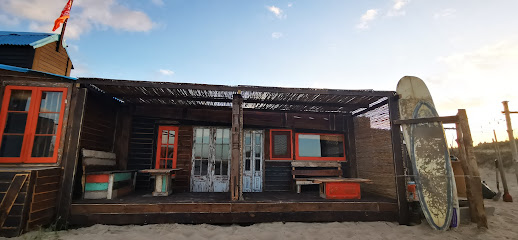
Viejo Lobo
Discover the charm of Cabo Polonio at Viejo Lobo, a cozy lodge offering rustic accommodations and a taste of local culture amidst stunning natural beauty.

Cerro De La Buena Vista
Discover Cerro De La Buena Vista, a breathtaking scenic spot in Rocha, Uruguay, where panoramic views meet serene landscapes along the Atlantic coast.
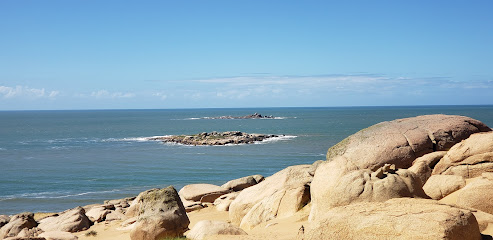
La Calavera Beach
Explore La Calavera Beach, a stunning natural haven in Uruguay's Rocha Department, perfect for relaxation, adventure, and unforgettable sunset views.
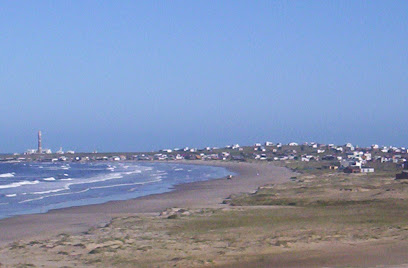
Reserva de Lobos Marinos de Cabo Polonio
Explore the stunning Reserva de Lobos Marinos de Cabo Polonio, a wildlife refuge home to playful sea lions and breathtaking coastal scenery.

El Bunker Bajonero
Experience the serene charm of Cabo Polonio at El Bunker Bajonero, your cozy retreat by the sea with rustic accommodations and stunning coastal views.
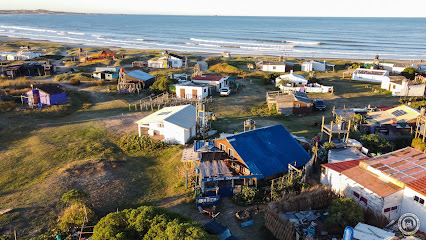
Ingreso Cabo Polonio
Explore Cabo Polonio, a serene park in Uruguay where stunning beaches and captivating landscapes await nature lovers and adventure seekers.
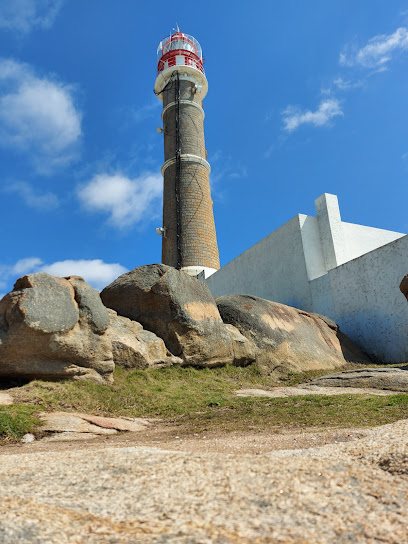
Dunas de Cabo Polonio
Experience the breathtaking beauty of Dunas de Cabo Polonio, a nature preserve with stunning sand dunes and rich biodiversity along Uruguay's coast.
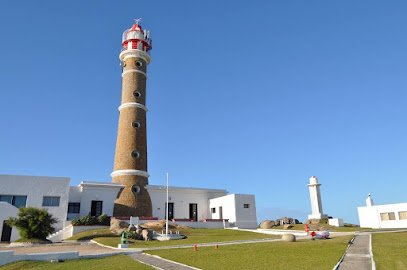
Monumento a la mujer charrúa
Discover the Monumento a la Mujer Charrúa in Cabo Polonio, a stunning sculpture that honors the indigenous heritage of Uruguay amidst breathtaking coastal scenery.
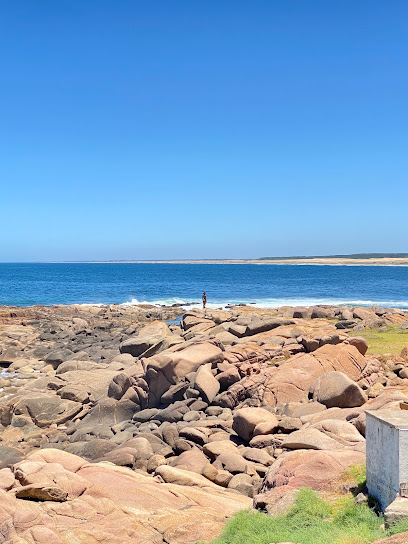
Marco de los Reyes de 1750
Explore Marco de los Reyes de 1750, a captivating historical site in Uruguay showcasing 18th-century architecture and rich cultural heritage.
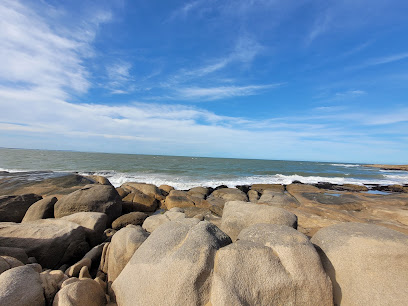
Aldea Infinita Museo Cabo Polonio
Discover the rich cultural heritage of Cabo Polonio at Aldea Infinita Museo, where local history and stunning landscapes come together.
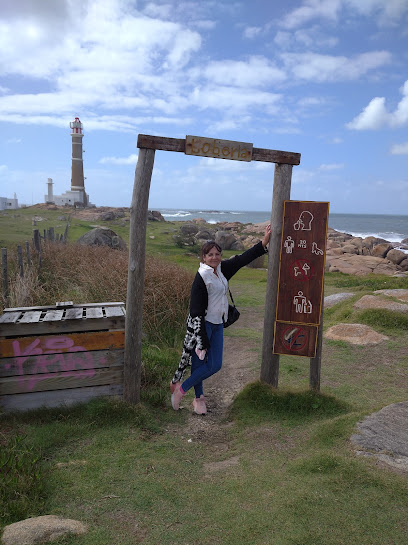
Unmissable attractions to see
Farol de Cabo Polonio
Discover the breathtaking views and natural beauty at the Cabo Polonio Lighthouse, a must-visit observation deck in Uruguay.
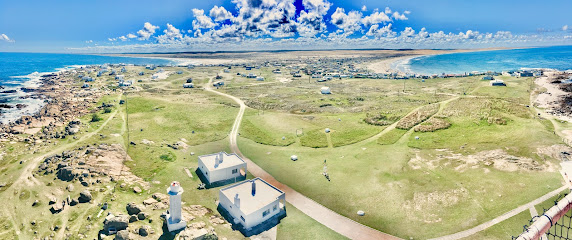
Playa Norte
Experience the tranquil beauty of Playa Norte in Cabo Polonio, a hidden gem with pristine beaches and breathtaking sunsets, perfect for nature lovers and peace seekers.
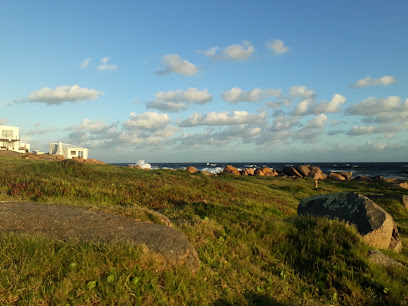
Aldea Infinita Museo Cabo Polonio
Discover the cultural essence of Cabo Polonio at Aldea Infinita Museo, where art, history, and nature beautifully intertwine.
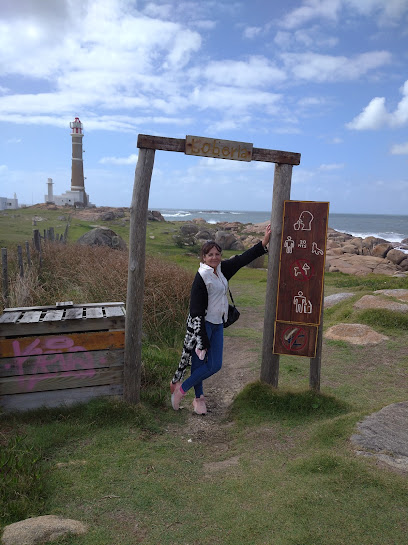
Camino de los Lobos
Experience the stunning landscapes and wildlife at Camino de los Lobos, a breathtaking tourist attraction in the heart of Uruguay's coastal beauty.
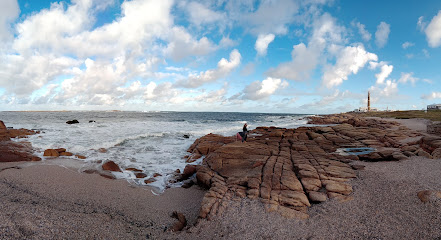
Barraza de Valizas, depto Rocha, Uruguay
Experience the serene beauty of Barraza de Valizas, Uruguay, where pristine beaches meet stunning landscapes for an unforgettable escape.

Isla De Castillos Grande
Discover the serene beauty of Isla De Castillos Grande, a pristine nature preserve in Cabo Polonio, Uruguay, perfect for eco-tourism and wildlife enthusiasts.

Isla Seca
Experience the natural beauty and tranquility of Isla Seca, a hidden gem in Cabo Polonio, Uruguay, perfect for eco-tourism and nature exploration.

Essential places to dine
La Perla del Cabo
Discover La Perla del Cabo: An exquisite restaurant and hotel offering fresh seafood amid stunning coastal scenery in Cabo Polonio.

Lobo Hostel Bar
Experience the best of Cabo Polonio at Lobo Hostel Bar – where exquisite grilled cuisine meets stunning coastal views.
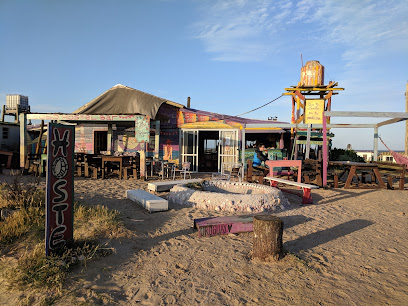
Lo de Dany
Discover authentic Uruguayan flavors at Lo de Dany in Cabo Polonio - where every meal is a celebration of local cuisine.

Posada Puertas Al Cabo
Discover tranquility and local flavors at Posada Puertas Al Cabo in stunning Cabo Polonio, where rustic charm meets breathtaking coastal beauty.
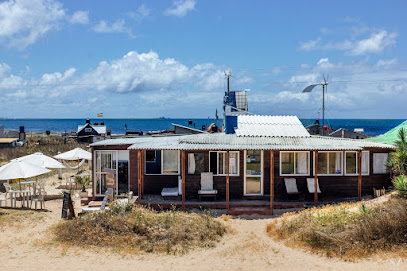
El Timbo
Experience authentic Uruguayan grilling at El Timbo in Cabo Polonio—where local flavors meet breathtaking coastal views.
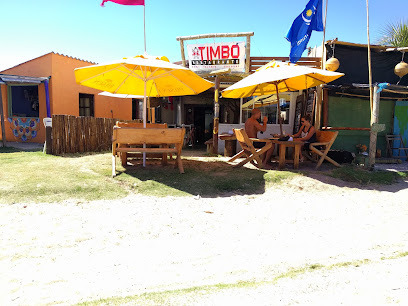
Comipaso La Majuga
Experience authentic Uruguayan cuisine at Comipaso La Majuga in Cabo Polonio - where local flavors meet stunning coastal views.
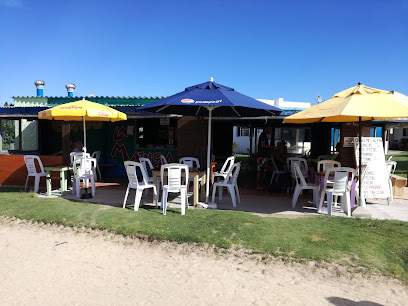
El Bonito
Discover El Bonito in Cabo Polonio - where exquisite grilled flavors meet stunning coastal views.

Mucho Bueno
Discover Mucho Bueno: A Culinary Delight in Cabo Polonio Offering Local Flavors and Stunning Coastal Views.
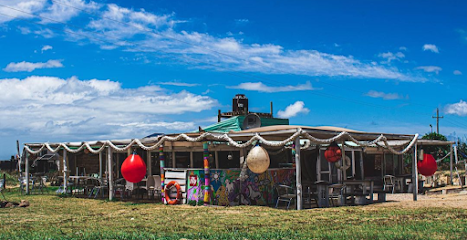
Lo de Joselo
Experience authentic Uruguayan cuisine at Lo de Joselo in Cabo Polonio – where fresh ingredients meet breathtaking coastal views.
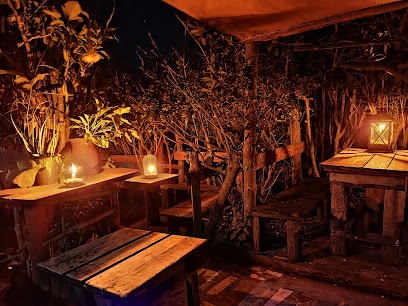
Restaurant Mariemar
Discover the flavors of Uruguay at Restaurant Mariemar in Cabo Polonio – where fresh seafood meets breathtaking ocean views.
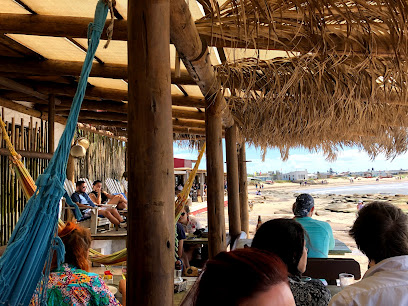
GUSTITO A CABO
Discover Gustito a Cabo in beautiful Cabo Polonio for an unforgettable culinary experience featuring local Uruguayan flavors amidst stunning ocean views.
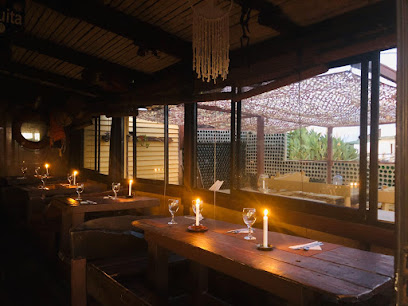
Buena Vista Restoran
Experience authentic Uruguayan cuisine with stunning ocean views at Buena Vista Restoran in beautiful Cabo Polonio.
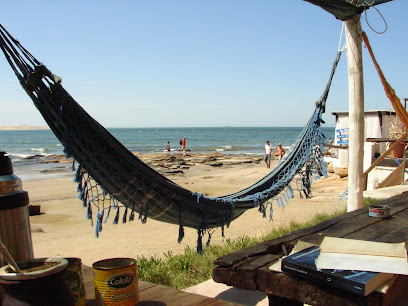
Arco Iris
Experience authentic Uruguayan cuisine at Arco Iris in Cabo Polonio, where local flavors meet vibrant coastal charm.
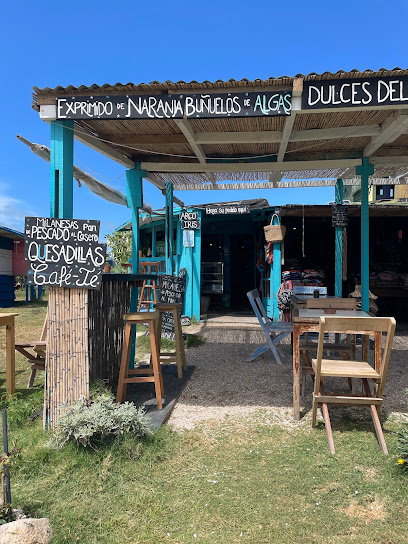
Hostel Parador Y Restaurant LA CAÑADA
Discover the flavors of Uruguay at Hostel Parador Y Restaurant LA CAÑADA, where rustic charm meets culinary excellence in Cabo Polonio.
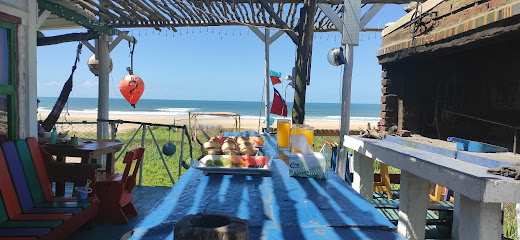
El Club Cabo Polonio
Discover El Club Cabo Polonio: where exquisite Uruguayan cuisine meets stunning coastal views in Rocha.
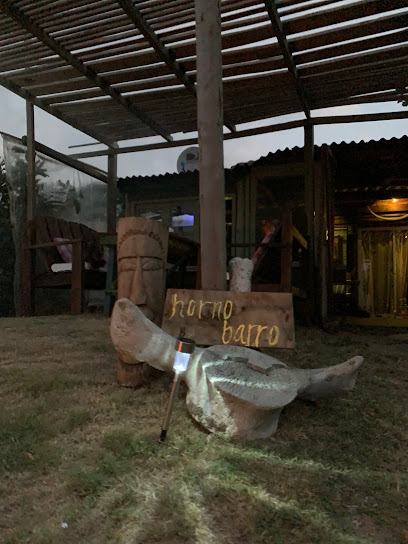
Markets, malls and hidden boutiques
Cabo Polonio National Park
Explore the breathtaking natural wonders of Cabo Polonio National Park, a hidden gem on Uruguay's eastern coastline, perfect for nature lovers and adventure seekers.
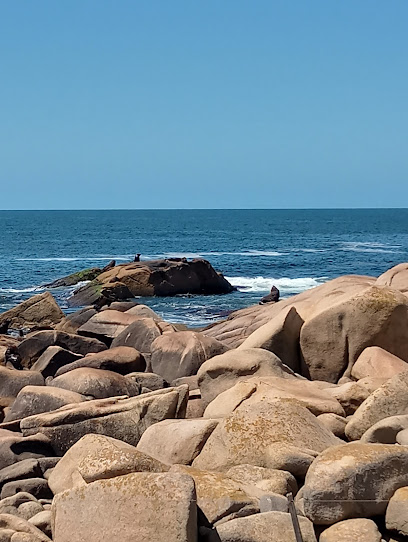
Playa Cabo Polonio
Experience the untouched beauty and tranquility of Playa Cabo Polonio, a hidden gem along Uruguay's stunning coastline.
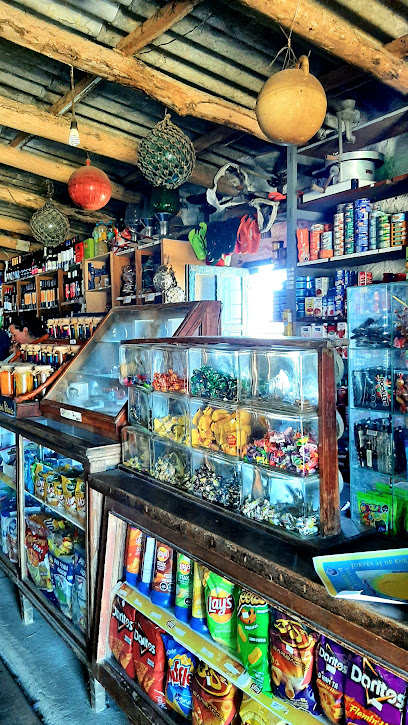
Farol de Cabo Polonio
Discover the enchanting Farol de Cabo Polonio, a breathtaking observation deck offering stunning views of the Atlantic and a serene escape into nature.
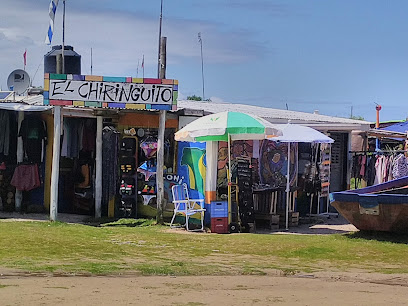
La Perla del Cabo
Experience tranquility and natural beauty at La Perla del Cabo, a unique hotel and restaurant in Cabo Polonio, Uruguay.
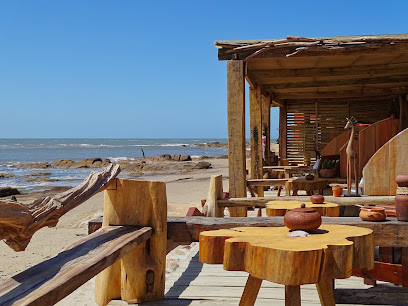
Viejo Lobo
Immerse yourself in the tranquil beauty of Cabo Polonio at Viejo Lobo, where rustic charm meets modern comfort in a stunning coastal setting.

Posada Mariemar
Discover tranquility and rustic charm at Posada Mariemar in Cabo Polonio, a stunning coastal retreat surrounded by nature's beauty.

Terminal Polonio
Discover the charm of Terminal Polonio, an inviting truck stop in Cabo Polonio, Uruguay, where scenic landscapes meet traveler-friendly amenities.

La Calavera Beach
Experience the tranquil beauty of La Calavera Beach, a hidden coastal paradise in Uruguay perfect for relaxation and family fun.
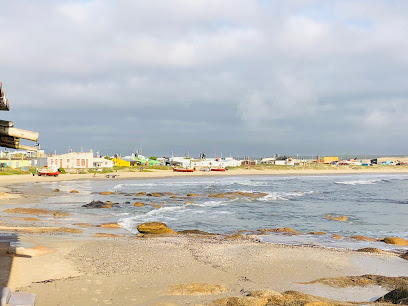
Posada Puertas Al Cabo
Discover Posada Puertas Al Cabo, a serene inn in Cabo Polonio, where rustic charm meets coastal beauty, perfect for an unforgettable escape.
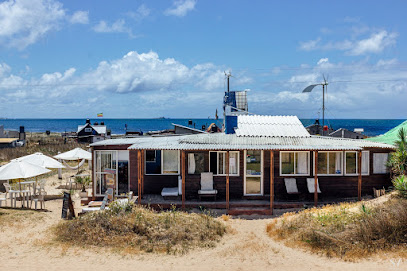
Posada de las Noctilucas
Discover tranquility in Cabo Polonio at Posada de las Noctilucas, where nature meets comfort in a stunning coastal setting.
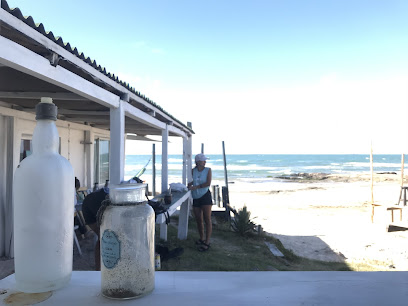
Lujambio
Explore the vibrant Lujambio Market in Rocha, Uruguay, where fresh produce and artisanal crafts bring local culture to life.
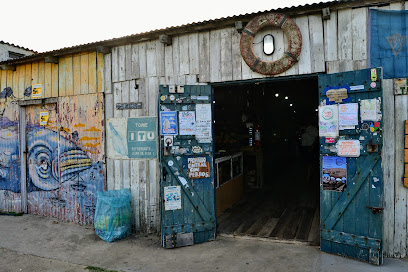
Posada Rosada de los Corvinos
Discover the serene beauty of Cabo Polonio at Posada Rosada de los Corvinos, a charming holiday apartment surrounded by nature's splendor.
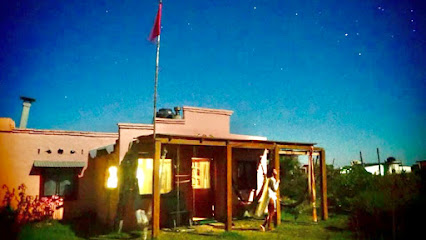
Abasto
Discover the heart of Costa de Oro at Abasto Grocery Store, where fresh local produce meets a friendly shopping experience.

El Albatros
Discover the serene beauty of Cabo Polonio at El Albatros, where nature meets comfort in a cozy indoor lodging experience.
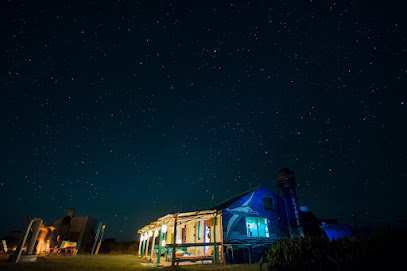
Supermercado Los Chispas
Experience the essence of Cabo Polonio at Supermercado Los Chispas, your go-to destination for local products and everyday essentials.
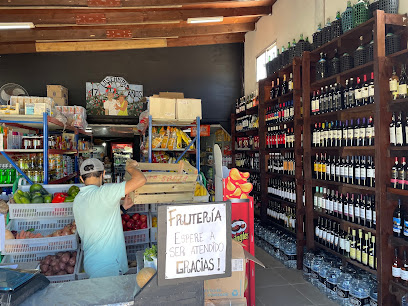
Essential bars & hidden hideouts
Lobo Hostel Bar
Discover the flavors of Cabo Polonio at Lobo Hostel Bar, where delicious grilled dishes meet the beauty of coastal life.

Narakan Cabo Polonio
Discover the serene beauty of Narakan Cabo Polonio, a hidden gem in Uruguay offering rustic accommodations and stunning coastal landscapes.
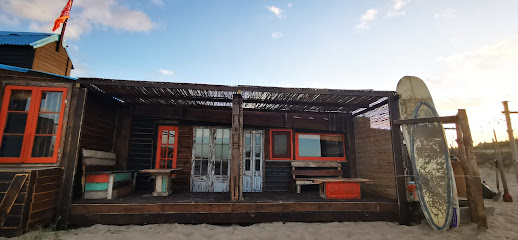
Viejo Lobo
Discover the vibrant charm of Viejo Lobo, a cozy lodge in Cabo Polonio, perfect for nature lovers and adventure seekers.

Cabo Polonio
Discover the serene beauty and natural wonders of Cabo Polonio, a unique coastal village in Uruguay, perfect for nature lovers and adventure seekers.
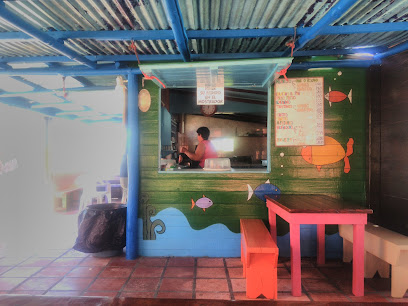
Salsipuedes
Explore the vibrant ambiance and local flavors of Salsipuedes, a must-visit bar in Rocha, Uruguay, for an unforgettable experience.
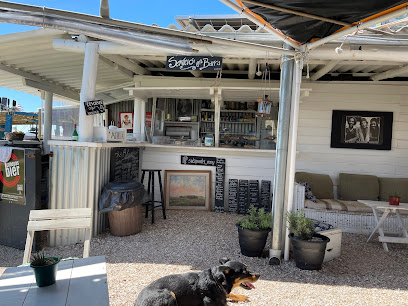
El Timbo
Experience the flavors of Cabo Polonio at El Timbo, where fresh grilled delicacies meet breathtaking coastal views.
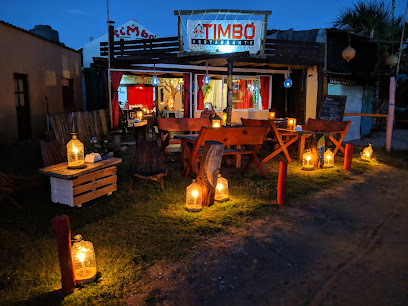
El Bunker Bajonero
Experience the charm of Cabo Polonio at El Bunker Bajonero, a cozy bed and breakfast surrounded by breathtaking natural beauty and tranquility.
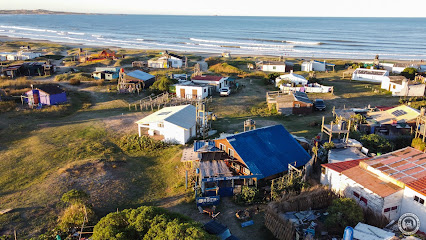
Comipaso La Majuga
Discover the culinary delights of Cabo Polonio at Comipaso La Majuga, where local flavors meet stunning coastal views.

Mucho Bueno
Savor the vibrant flavors of Cabo Polonio at Mucho Bueno, where fresh local ingredients meet a stunning coastal ambiance.
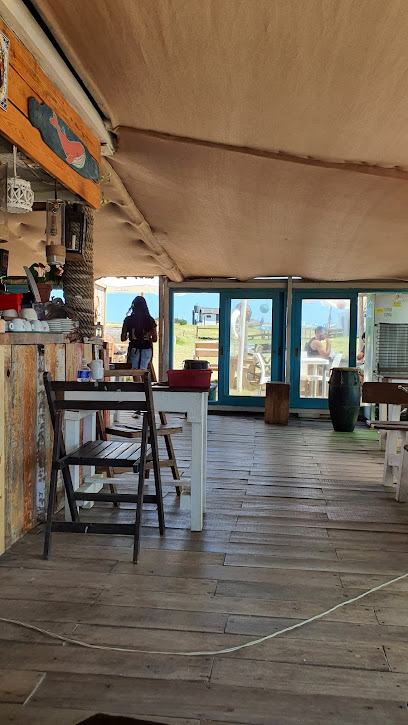
Lo de Joselo
Discover the flavors of Cabo Polonio at Lo de Joselo, where local ingredients meet a cozy atmosphere for an unforgettable dining experience.
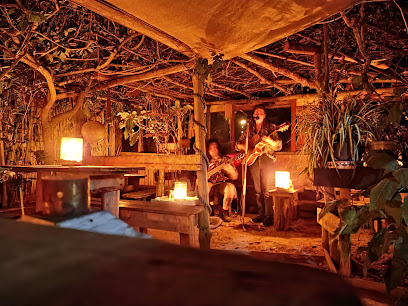
Restaurant Mariemar
Discover the flavors of Cabo Polonio at Restaurant Mariemar, where local cuisine meets stunning coastal views for an unforgettable dining experience.
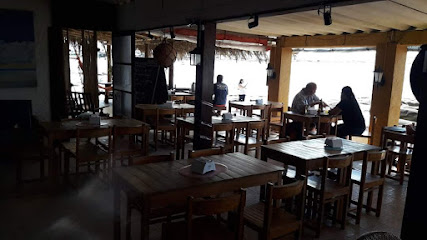
GUSTITO A CABO
Experience the vibrant flavors of Uruguayan cuisine at Gustito a Cabo in Cabo Polonio, a must-visit destination for food enthusiasts.
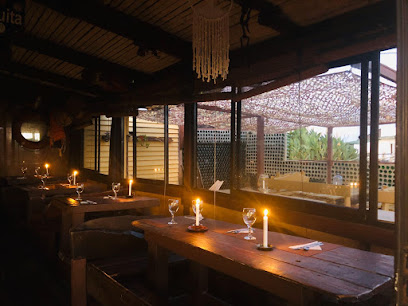
Estación Central
Experience the vibrant local culture at Estación Central, a lively pub in Rocha, Uruguay, offering delicious drinks and a welcoming atmosphere.
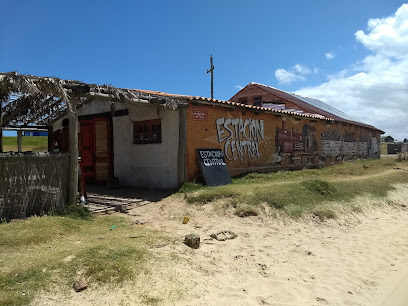
Hostería y bar de playa Casa Polonica
Discover the charm of Hostería y Bar de Playa Casa Polonica in Oceanía del Polonio, a perfect blend of relaxation and vibrant beach life.
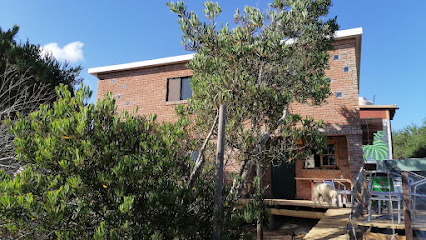
Hostel Parador Y Restaurant LA CAÑADA
Discover the flavors of Uruguay at Hostel Parador Y Restaurant LA CAÑADA in Cabo Polonio, where local ingredients meet vibrant culture.
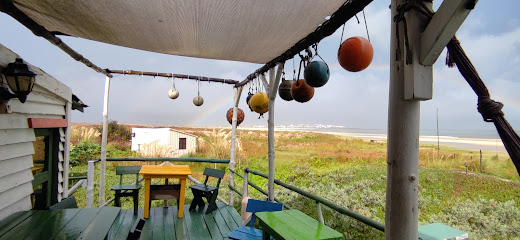
Local Phrases about Cabo Polonio
-
- HelloHola
[oh-lah] - GoodbyeAdiós
[ah-dyohs] - YesSí
[see] - NoNo
[noh] - Please/You're welcomePor favor/De nada
[pohr fah-vohr/deh nah-dah] - Thank youGracias
[grah-syahs] - Excuse me/SorryPerdón/Disculpe
[pehr-dohn/dees-kool-peh] - How are you?¿Cómo estás?
[koh-moh ehs-tahs] - Fine. And you?Bien. ¿Y tú?
[byen. ee too] - Do you speak English?¿Hablas inglés?
[ah-blahs een-glehs] - I don't understandNo entiendo
[noh ehn-tyen-doh]
- HelloHola
-
- I'd like to see the menu, pleaseMe gustaría ver el menú, por favor
[meh goos-tah-ree-ah behr ehl meh-noo, pohr fah-vohr] - I don't eat meatNo como carne
[noh koh-moh kahr-neh] - Cheers!¡Salud!
[sah-lood] - I would like to pay, pleaseMe gustaría pagar, por favor
[meh goos-tah-ree-ah pah-gahr, pohr fah-vohr]
- I'd like to see the menu, pleaseMe gustaría ver el menú, por favor
-
- Help!¡Ayuda!
[ah-yoo-dah] - Go away!¡Vete!
[veh-teh] - Call the Police!¡Llama a la policía!
[yah-mah ah lah poh-lee-see-ah] - Call a doctor!¡Llama a un médico!
[yah-mah ah oon meh-dee-koh] - I'm lostEstoy perdido/a
[ehs-toy pehr-dee-doh/dah] - I'm illEstoy enfermo/a
[ehs-toy ehn-fehr-moh/dah]
- Help!¡Ayuda!
-
- I'd like to buy...Me gustaría comprar...
[meh goos-tah-ree-ah kohm-prahr] - I'm just lookingSolo estoy mirando
[soh-loh ehs-toy meer-ahn-doh] - How much is it?¿Cuánto cuesta?
[kwahn-toh kwehs-tah] - That's too expensiveEs demasiado caro
[ehs deh-mah-syah-doh kah-roh] - Can you lower the price?¿Puedes bajar el precio?
[pweh-dehs bah-hahr ehl preh-see-oh]
- I'd like to buy...Me gustaría comprar...
-
- What time is it?¿Qué hora es?
[keh oh-rah ehs] - It's one o'clockEs la una en punto
[ehs lah oo-nah ehn poon-toh] - Half past (10)Y media (10)
[ee meh-dee-ah (diez)] - MorningMañana
[mah-nyah-nah] - AfternoonTarde
[tahr-deh] - EveningNoche
[noh-cheh] - YesterdayAyer
[ah-yehr] - TodayHoy
[oy] - TomorrowMañana
[mah-nyah-nah] - 1Uno
[oo-noh] - 2Dos
[dohs] - 3Tres
[trehs] - 4Cuatro
[kwah-troh] - 5Cinco
[seen-koh] - 6Seis
[says] - 7Siete
[syeh-teh] - 8Ocho
[oh-choh] - 9Nueve
[nweh-veh] - 10Diez
[dyehs]
- What time is it?¿Qué hora es?
-
- Where's a/the...?¿Dónde está un/el...?
[dohn-deh ehs-tah oon/el] - What's the address?¿Cuál es la dirección?
[kwahl ehs lah dee-rek-syohn] - Can you show me (on the map)?¿Puedes mostrarme (en el mapa)?
[pweh-dehs mohs-trahr-meh (ehn ehl mah-pah)] - When's the next (bus)?¿Cuándo es el próximo (autobús)?
[kwan-doh ehs ehl proh-ksee-moh (ow-toh-boos)] - A ticket (to ....)Un boleto (para ....)
[oon boh-leh-toh (pah-rah)]
- Where's a/the...?¿Dónde está un/el...?
History of Cabo Polonio
-
Cabo Polonio, a remote and rugged coastal village in Uruguay, has a history that dates back to the early 18th century. Named after Joseph Poloni, an Italian merchant whose ship was wrecked off the coast, the area was initially populated by a mix of indigenous people and early European settlers. The settlement remained relatively isolated due to its difficult-to-navigate terrain and lack of infrastructure.
-
The treacherous waters surrounding Cabo Polonio have been the site of numerous shipwrecks, earning the area a reputation as a graveyard for ships. During the 18th and 19th centuries, pirates and privateers often used the remote location as a hideout. The remains of shipwrecks can still be found along the coast, adding an air of mystery and historical intrigue to the area.
-
In 1881, the iconic Cabo Polonio Lighthouse was constructed to help guide ships safely along the perilous coastline. Standing 26 meters tall, the lighthouse has since become a symbol of the area. Its powerful beam, visible for miles, has been crucial in preventing countless shipwrecks. The lighthouse remains operational and is a popular tourist attraction, offering panoramic views of the Atlantic Ocean and the surrounding dunes.
-
The 1960s and 1970s saw Cabo Polonio become a haven for artists, writers, and hippies seeking an alternative lifestyle. The area’s isolation and natural beauty attracted a bohemian crowd, and a unique culture began to develop. This period saw the establishment of various informal communities and the construction of rustic cabins, many of which still stand today.
-
In 2009, Cabo Polonio was officially designated as part of the Cabo Polonio National Park, recognizing its ecological importance and unique landscape. The park protects a diverse range of flora and fauna, including sea lions, migratory birds, and indigenous plant species. This designation has helped to preserve the area’s natural beauty and cultural heritage, ensuring that it remains a pristine and unspoiled destination.
-
Today, Cabo Polonio remains one of Uruguay’s most unique and captivating destinations. The village has no electricity grid or running water, maintaining its off-the-grid charm. Visitors are drawn to its secluded beaches, rolling sand dunes, and vibrant local culture. The community continues to thrive, blending traditional ways of life with a growing interest in sustainable tourism.
Cabo Polonio Essentials
-
Cabo Polonio is located in the Rocha Department of Uruguay. The nearest international airports are Carrasco International Airport in Montevideo and Laguna del Sauce Airport in Punta del Este. From Montevideo, you can take a bus to the town of Castillos or Valizas, and then transfer to a 4x4 vehicle that will take you directly into Cabo Polonio. The journey from Montevideo typically takes around 4 to 5 hours. Note that private cars are not allowed into Cabo Polonio to preserve its natural environment.
-
Cabo Polonio is a car-free zone, so getting around is primarily done on foot. The area is small, and most attractions are within walking distance. For those looking to explore the farther reaches of the area, guided tours and horseback riding are available. The 4x4 vehicles that bring visitors into Cabo Polonio also serve as a means to traverse the sand dunes and reach more remote parts of the region.
-
The official currency in Uruguay is the Uruguayan Peso (UYU). Cabo Polonio has very limited access to ATMs and credit card facilities, so it is essential to carry enough cash for your stay. Some establishments may accept US Dollars, but it is always safer to have local currency. Ensure you withdraw sufficient cash before arriving, as banking facilities are scarce.
-
Cabo Polonio is generally a safe destination with a laid-back atmosphere. However, it is advisable to take standard precautions such as safeguarding your belongings and avoiding secluded areas at night. There are no specific high-crime areas targeting tourists, but it is always best to stay vigilant and aware of your surroundings. Emergency services are limited, so extra care should be taken.
-
In case of emergency, dial 911 for immediate assistance. Cabo Polonio has a small medical outpost for minor health issues, but for more serious medical emergencies, you may need to travel to the nearest town with comprehensive medical facilities. It is highly recommended to have travel insurance that covers medical emergencies. Pharmacies and over-the-counter medications are available in nearby towns.
-
Fashion: Do bring comfortable and casual clothing suitable for outdoor activities. Pack layers, as the weather can change rapidly. Avoid wearing flashy jewelry or expensive accessories. Religion: Do respect local customs and traditions, even though Cabo Polonio is not particularly religious. Public Transport: Do plan your transport in advance, as options are limited. Don't rely on public transport within Cabo Polonio itself. Greetings: Do greet locals with a friendly 'Hola!' or 'Buen día!' and a smile. Eating & Drinking: Do try local seafood and traditional Uruguayan dishes. Don't waste food or leave litter behind, as Cabo Polonio is an eco-friendly destination.
-
To experience Cabo Polonio like a local, take the time to explore the natural beauty of the area, including its stunning sand dunes, pristine beaches, and the iconic lighthouse. Engage with local artisans and buy handmade crafts as souvenirs. Visit during the low season if you prefer a quieter experience. Don't miss the opportunity to stargaze at night; the area's minimal light pollution makes for spectacular night skies. Lastly, embrace the slow pace of life—unplug and enjoy the tranquility.
Trending Landmarks in Cabo Polonio
-
Cabo Polonio National Park
-
Puerta del Polonio Visitor center
-
Playa Cabo Polonio
-
Farol de Cabo Polonio
-
Narakan Cabo Polonio
-
Viejo Lobo
-
Cerro De La Buena Vista
-
La Calavera Beach
-
Reserva de Lobos Marinos de Cabo Polonio
-
El Bunker Bajonero
-
Ingreso Cabo Polonio
-
Dunas de Cabo Polonio
-
Monumento a la mujer charrúa
-
Marco de los Reyes de 1750
-
Aldea Infinita Museo Cabo Polonio
Nearby Cities to Cabo Polonio
-
Things To Do in Punta del Este
-
Things To Do in Montevideo
-
Things To Do in Tacuarembó
-
Things To Do in Colonia del Sacramento
-
Things To Do in La Plata
-
Things To Do in Buenos Aires
-
Things To Do in Fray Bentos
-
Things To Do in Mar del Plata
-
Things To Do in Rosario
-
Things To Do in Encarnacion
-
Things To Do in Carmen del Parana
-
Things To Do in Florianópolis
-
Things To Do in Puerto Iguazú
-
Things To Do in Foz do Iguaçu
-
Things To Do in Villarrica








